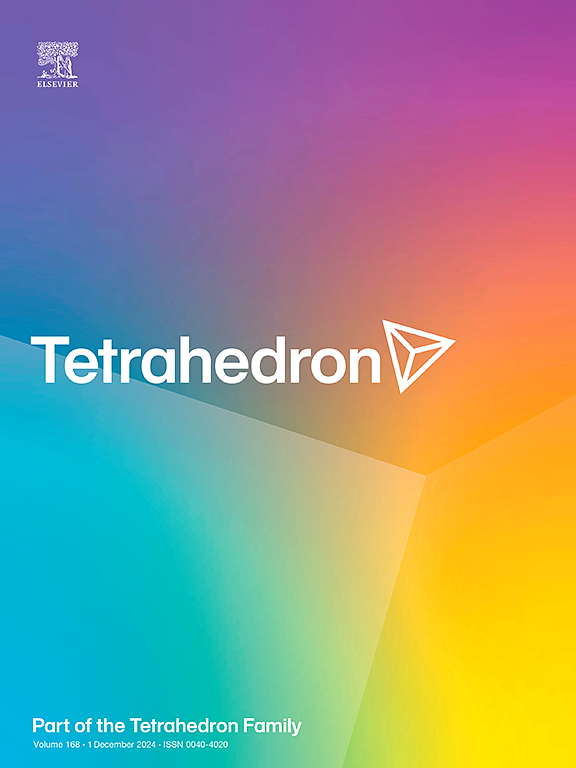Cp∗Ir(III) Catalyzed greener synthesis of nitrogenous heterocycles using acceptor less dehydrogenative coupling (ADC) strategy
IF 2.1
3区 化学
Q2 CHEMISTRY, ORGANIC
引用次数: 0
Abstract
In our preliminary research, we demonstrated excellent catalytic activity of Ir(III) complexes coordinated via a picolinamidato moiety. Utilizing these catalysts, we efficiently synthesized α-alkylated ketones through the hydrogen-borrowing methodology, employing ketones and secondary alcohols in the presence of primary alcohols. Furthermore, we successfully applied an acceptor less dehydrogenative coupling (ADC) strategy using the same series of in-house synthesized Ir(III) catalysts to generate a variety of nitrogen-containing heterocycles, including quinoline, pyrrole, and pyridine derivatives under neat (solvent-free) conditions at 90 °C. Encouraged by these results, we extended the catalytic system to the synthesis of additional nitrogen-rich heterocyclic frameworks such as pyrido[2,3-b]pyrazine, 1,8-naphthyridine, and quinazolin-4(3H)-one derivatives, achieving good to excellent yields. This methodology is particularly attractive due to its environmentally benign nature requiring only a small amount of catalyst (0.3 mol%), base (0.2 mol%) and producing only non-toxic by-products H2 and H2O. Overall, this work contributes to the development of sustainable and green synthetic approaches for the construction of valuable nitrogen-containing heterocycles.

Cp * Ir(III)用少受体脱氢偶联(ADC)策略催化更环保的含氮杂环化合物合成
在我们的初步研究中,我们证明了通过picolinamidato片段配位的Ir(III)配合物具有优异的催化活性。利用这些催化剂,我们利用酮和仲醇在伯醇的存在下,通过借氢方法高效地合成了α-烷基化酮。此外,我们成功地应用了一种无受体脱氢偶联(ADC)策略,使用相同系列的内部合成的Ir(III)催化剂,在整齐(无溶剂)条件下,在90°C下生成了多种含氮杂环化合物,包括喹啉、吡咯和吡啶衍生物。受这些结果的鼓舞,我们将催化系统扩展到合成其他富氮杂环框架,如吡啶[2,3-b]吡嗪,1,8-萘啶和喹唑啉-4(3H)- 1衍生物,获得了良好的收率。这种方法特别具有吸引力,因为它对环境无害,只需要少量的催化剂(0.3 mol%)和碱(0.2 mol%),并且只产生无毒的副产物H2和H2O。总的来说,这项工作有助于可持续和绿色合成方法的发展,以构建有价含氮杂环。
本文章由计算机程序翻译,如有差异,请以英文原文为准。
求助全文
约1分钟内获得全文
求助全文
来源期刊

Tetrahedron
化学-有机化学
CiteScore
3.90
自引率
4.80%
发文量
439
审稿时长
34 days
期刊介绍:
Tetrahedron publishes full accounts of research having outstanding significance in the broad field of organic chemistry and its related disciplines, such as organic materials and bio-organic chemistry.
Regular papers in Tetrahedron are expected to represent detailed accounts of an original study having substantially greater scope and details than that found in a communication, as published in Tetrahedron Letters.
Tetrahedron also publishes thematic collections of papers as special issues and ''Reports'', commissioned in-depth reviews providing a comprehensive overview of a research area.
 求助内容:
求助内容: 应助结果提醒方式:
应助结果提醒方式:


